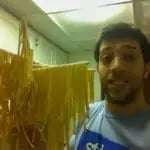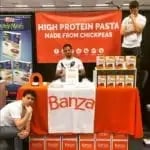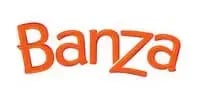“I was completely freaking out. We literally found ourselves with 20,000 pounds of awful product… It was just turning into pasta mush.”
24-year-old Brian Rudolph was having a really bad day.
It was May 2014, and it seemed like Rudolph’s startup pasta company, Banza, was going up in flames. He’d just burned through $100,000 — more than half his operating capital — in a disastrous attempt to manufacture 40,000 boxes of chickpea pasta. He was trying to fill his first big order with Meijer grocery stores.
But the product was so bad that the worst batches were turned into pig feed. For real.
The plan had been to manufacture all the pasta in two days, but the factory was doing something wrong, and Rudolph was bleeding money and supplies as the process stretched out over a month.
Rudolph was faced with a choice: put a shitty product on the shelves or back out of his contract to supply 250 stores, and risk spoiling the relationship with his biggest buyer forever.
“We had to live by that classic startup phrase. Fuck it. Ship it.”
Takeaway #1
“Fuck it, ship it.”
This is the shorter version of “Don’t let perfect be the enemy of good.” A.k.a., don’t let your idea about how things could be keep you from doing what you can in real time.


Takeaway #2
Keep on top of the manufacturing process
Rudolph’s first batch of Banza was made at a failing Detroit factory. The product was good. But when he scaled up, he needed a bigger factory… and he contacted one he’d never worked with before.
Shit got real. Real bad.
His bigger batch was a mess – it just didn’t look right. But it was there, and he still stocked it with his vendor; no empty shelves ruined that relationship.
“For about three months we were just selling a story,” he said. The product wasn’t there yet.
Takeaway #3
Your company story should be awesome, even if you make it up.
Some of the best company stories are totally fake.
Look at Google’s fake “garage story.” Larry Page and Sergey Brin were supposedly workin’ it in a Menlo Park garage the same way Hewlett-Packard’s founders did.
A few years ago that story got a reality check: Google was two-years-old and had $1 million by the time the founders started working in the garage.
In Rudolph’s case, his story was about being the pain-in-the-ass kid who lived on bagels and chicken nuggets. As a Finance major in college, he started eating better when he realized healthier food cut down his chronic sinus infections.
That started him on a path to healthy eating, and after college, he started experimenting with different products. He began cooking chickpea pasta in his Detroit kitchen because there was just something about them he thought would be perfect for pasta.
 “Chickpeas are one of very few foods that are both nutritious and delicious. They have a natural, savory umami flavor that you don’t get from a lot of other healthy ingredients — and I love them. I was going through a two-pound tub of hummus every week before making Banza. Plus, I love making things.”
“Chickpeas are one of very few foods that are both nutritious and delicious. They have a natural, savory umami flavor that you don’t get from a lot of other healthy ingredients — and I love them. I was going through a two-pound tub of hummus every week before making Banza. Plus, I love making things.”
He drove his roommates crazy blasting his R&B and country playlists while he cooked. He thought he was on to something when he finished his first batch of chickpea pasta. But he knew it for sure when he asked his roommate to try some; he couldn’t tell it wasn’t regular pasta.
A few months later, after getting funded by the Young Entrepreneurs Across America nonprofit foundation, Rudolph got cast on a reality show called Restaurant Startup.
By the end of the show, he’d convinced judge Joe Bastianich (who is also on MasterChef) to invest in his product. This endorsement was huge for Rudolph. If anyone would spot a cheap pasta knockoff, it’s him. Rudolph was thrilled when he said he loved the product.
“I eat pasta every day. I own a pasta company. I make pasta every day … I believe in this,” Bastianich wrote about Banza.
Takeaway #4
When dealing with physical products, prepare for problems
Food is way harder to work with than technology. For one, physical ingredients can be ruined.
And you interact with your customers in a completely different way.
With a tech startup you’re creating something scalable so you don’t face the same problems with the physical product. But with food you can connect with the customer on a totally different level. That product is on people’s shelves every day and they see it.
“We want to do what Chobani did with Greek yogurt,” he said. And he wants to target the unhealthy foods on grocery store shelves, remaking them with better ingredients to create revitalized, healthy products.

Banza came from humble beginnings: one guy making a messy, sticky product in the most inefficient way possible. It hit serious $100,000 dollar roadblocks. Pig feed roadblocks. But stick with it, all you badass foodie entrepreneurs. Because you’re the ones actually changing how people live.
And FYI, Banza is now sold in 1,700 stores across America. #Win

